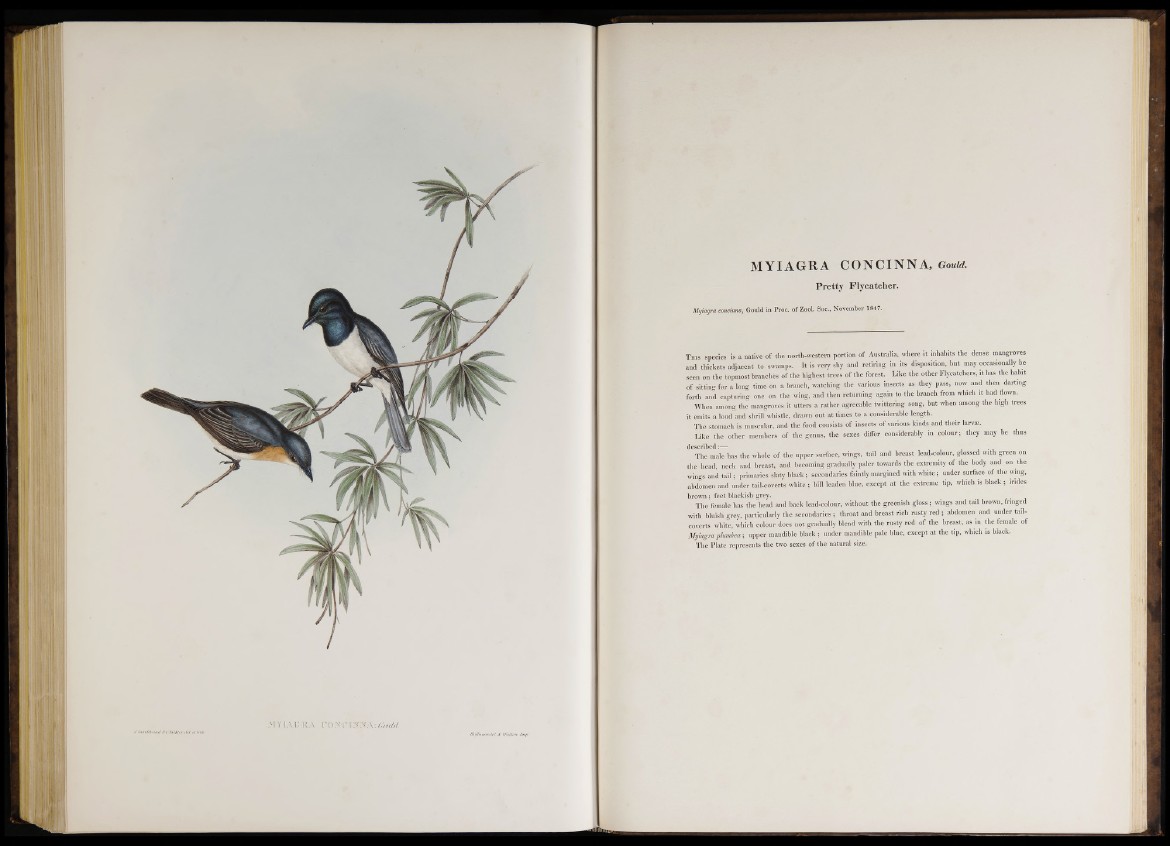
MYIAGRA CONCINNA, GoM.
Pretty Flycatcher.
Myiagra concinna, Gould in Proc. of Zool. Soc., November 1847.
T h i s species is a native of the north-western portion of Australia, where it inhabits the dense mangroves
and thickets adjacent to swamps. It is very shy and retiring in its disposition, hut may occasionally he
seen on the topmost branches of the highest trees of the forest. Like the other Flycatchers, it has the habit
o f sitting for a long time on a branch, watching the various insects as they pass, now and then darting
forth and capturing one on the wing, and then returning again to the branch from which it had flown.
When among the mangroves it utters a rather agreeable twittering song, but when among the high trees
it emits a loud and shrill whistle, drawn out at times to a considerable length.
The stomach is muscular, and the food consists of insects o f various kinds and their larvie.
Like the other members o f the genus, the sexes differ considerably in colour; they may be thus
described t— * '_ - % ’ . ' .
The male has the whole of the upper surface, wings, tail and breast lead-colour, glossed with green on
the head, neck and breast, and becoming gradually paler towards the extremity of the body and on the
wings and ta il; primaries slaty black; secondaries faintly margined with white; under surface of the wing,
abdomen and under tail-coverts white ; hill leaden blue, except at the extreme tip, which is black; irides
brown; feet blackish grey.
The female has the head and back lead-colour, without the greenish gloss; wings and tail brown, fringed
with bluish grey, particularly the secondaries ; throat and breast rich rusty red ; abdomen and under tail-
coverts white, which colour does not gradually blend with the rusty red of the breast, as in the female of
Myiagra flumhea ; upper mandible black; under mandible pale blue, except at the tip, which is black.
The Plate represents the two sexes o f the natural size.